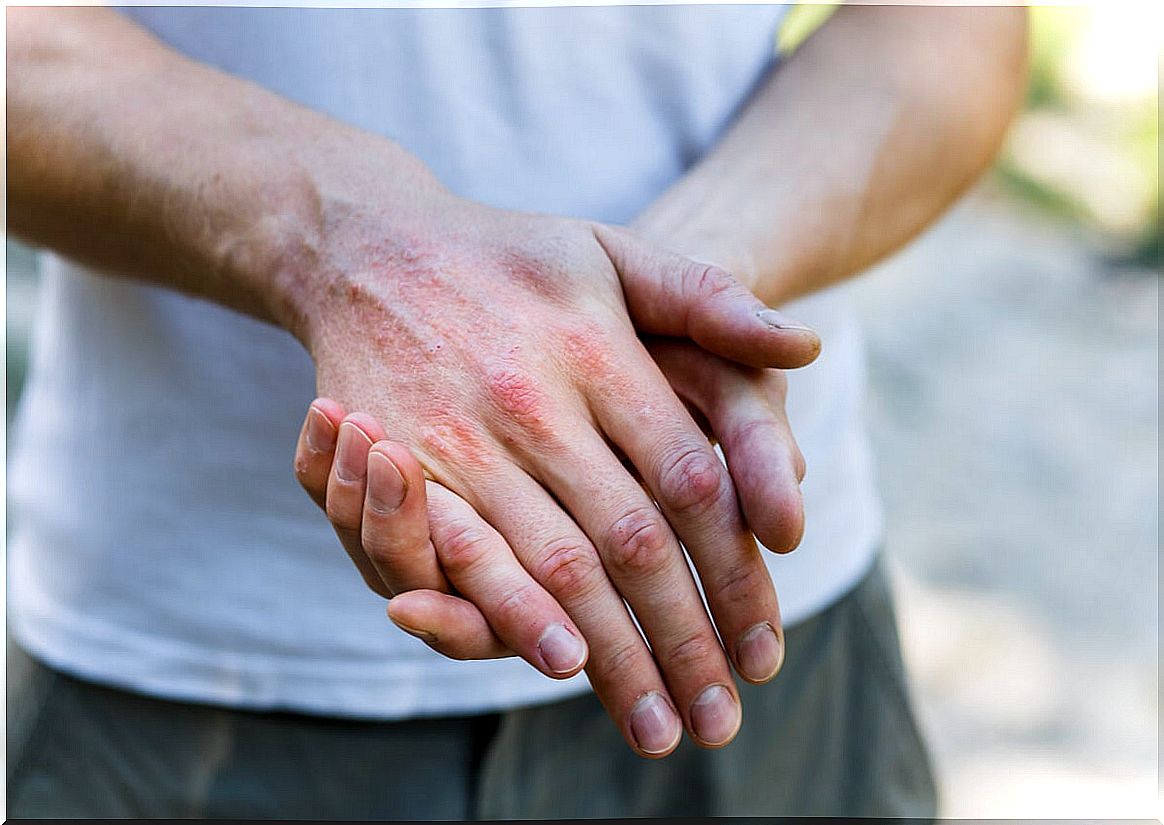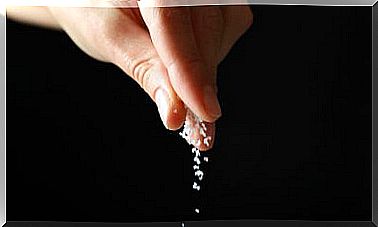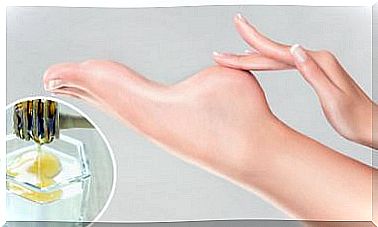What Are The Treatments For Atopic Dermatitis?
Treatments for atopic dermatitis are intended to lessen the symptoms of severe itching and redness. In addition, this pathology presents with colored plaques with vesicles, marked skin folds and scales, according to the stage of evolution in which it is found.
It manifests itself with outbreaks that appear and resolve intermittently throughout life. An article published in the Annals of Nutrition & Metabolism details that almost 20% of the pediatric population suffers from it. There are different therapeutic options. Do you know which ones they are? We detail them below.
Treatments for atopic dermatitis
Atopic dermatitis is not curable and many patients will experience a chronic course of the pathology. Consequently, treatment aims to reduce the duration and degree of the rash, if it occurs, as well as to minimize the number of outbreaks.
Emollients
The use of emollients in the treatment of atopic dermatitis is a fundamental part. They must be applied several times a day. A review in the American Journal of Clinical Dermatology has shown that their consistent use reduces the need for corticosteroid creams.
The main reason for the intensive use of an emollient is its ability to increase the hydration of the epidermis, especially by reducing evaporation, since it acts as an occlusive layer on top of the skin.
A thick, high-fat cream or ointment is recommended for drier skin. On the other hand, creams and lotions with a higher water content are used only for very mild eczema. It is important that this choice prefers the absence of perfumes and other potential allergens, as they can cause secondary allergic sensitization.

You may be interested: How to take care of atopic dermatitis in summer?
Topical corticosteroids
Topical corticosteroids are the mainstay of treatment for moderate and severe atopic dermatitis. In both children and adults, they are a valid option. They are grouped hierarchically into different classes according to their vasoconstrictor capacities, that is, their power to reduce the caliber of the arteries. Preparations can be mild, moderate, strong, and very strong
Corticosteroid creams are used to treat acute flare-ups of atopic dermatitis, as well as for maintenance therapy. That is, they act to prevent relapses of the disease when the acute outbreak is under control.
According to the British Medical Journal , a daily application of the cream is recommended to treat acute flare-ups at the lowest potency deemed sufficient to clear eczema in 1 to 2 weeks. The beginning of the approaches always respects the progression from minor to major.
Calcineurin inhibitors
Pimecrolimus and tacrolimus creams are newer formulations used for the treatment of acute flare-ups as well as for maintenance therapy. According to studies in the Journal of Dermatological Science , in moderate to severe atopic dermatitis topical tacrolimus is as effective as moderately potent corticosteroids and more effective than mild ones.
Corticosteroid side effects, such as thinning of the skin, are not seen with topical calcineurin inhibitors. This allows daily application for longer periods.
Phototherapy as a treatment for atopic dermatitis
Generalized eczema benefits from UV light treatment. Narrowband UVB light is suitable for treating adults with recalcitrant eczema.
Broadband UVA light can also be used and shows an efficacy and tolerability profile similar to that of narrowband UVB, according to publications from the Spanish Academy of Dermatology and Venereology . At medium doses, UVA phototherapy has a similar efficacy and tolerability profile to narrowband UVB.
Difficult-to-treat atopic dermatitis often disappears with phototherapy for 1 to 2 months, if sessions are held three to five times a week. It is common to combine it with topical corticosteroids.

Also read: What is phototherapy and what is it for?
Systemic immunosuppressants
Due to the risk of side effects, prolonged oral corticosteroid treatment is not recommended. Instead, Drugs indicates in a review that it should be tapering off while introducing a second immunosuppressive drug for very severe chronic relapsing atopic dermatitis.
Other medications
Oral antihistamines are recommended to relieve itching, but they have no effect on eczema activity. Non-sedating antihistamines should be used, although when night itching interferes with sleep, the others are recommended.
The difference is the drowsiness that appears as an adverse effect in several of these drugs. In any case, in patients with difficulties to reconcile rest, they can be helpful.
Treatment of atopic dermatitis: what to watch out for?
The treatment of atopic dermatitis requires an individual and complex approach. Management of triggers is essential, as well as proper hygiene habits.
Topical or systemic treatments should be tailored to the severity and extent of the disease. For this, it is essential to make the relevant consultation with the professional in dermatology.









